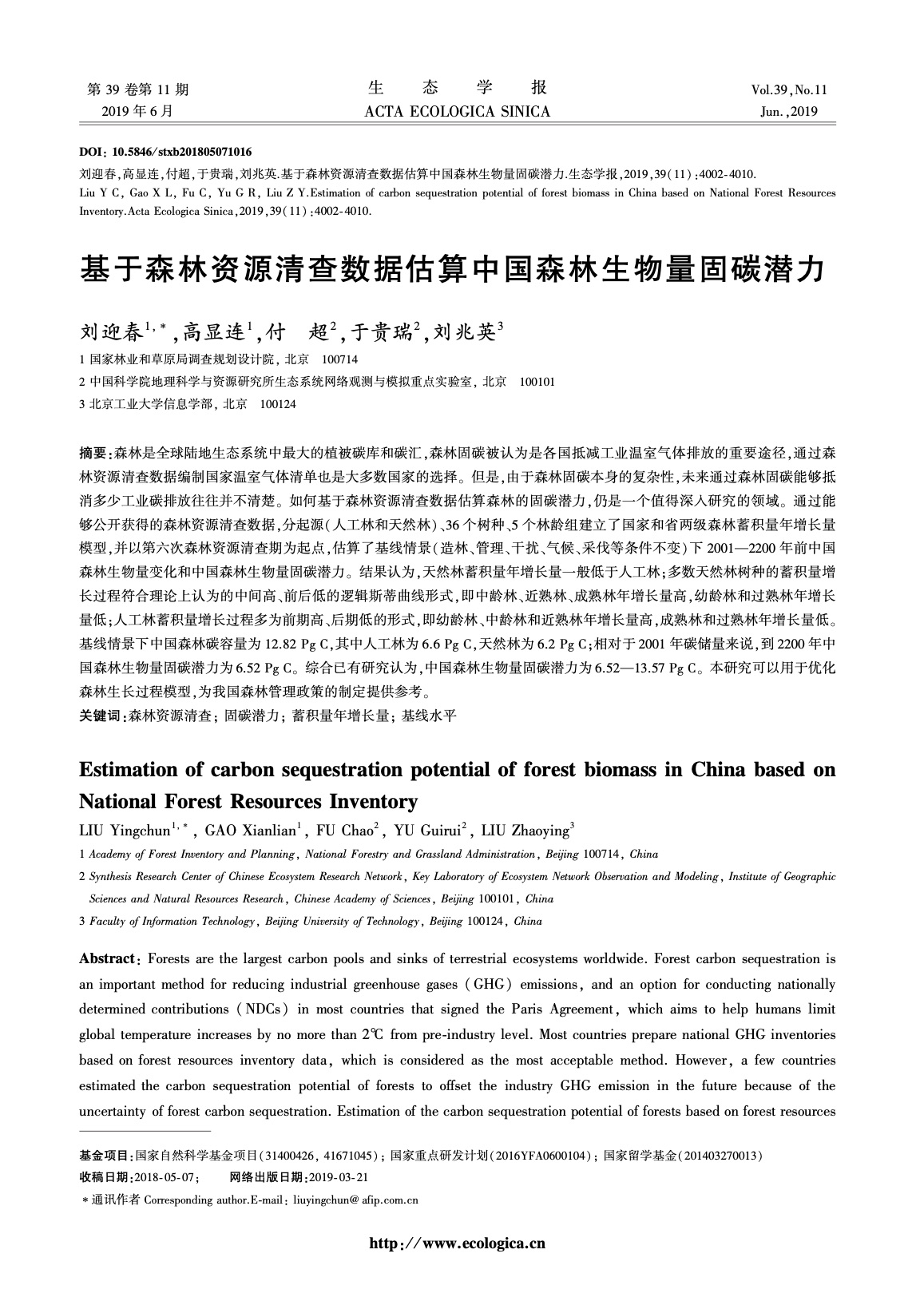Forests are the largest carbon pools and sinks of terrestrial ecosystems worldwide. Forest carbon sequestration is an important method for reducing industrial greenhouse gases (GHG) emissions, and an option for conducting nationally determined contributions (NDCs) in most countries that signed the Paris Agreement, which aims to help humans limit global temperature increases by no more than 2°C from pre-industry level. Most countries prepare national GHG inventories based on forest resources inventory data, which is considered as the most acceptable method. However, a few countries estimated the carbon sequestration potential of forests to offset the industry GHG emission in the future because of the uncertainty of forest carbon sequestration. Estimation of the carbon sequestration potential of forests based on forest resources inventory requires an improved understanding of forest growth and forestry sustainability. In this study, based on the publicly available National Forest Resources Inventory of China, we established a forest volume increase model for natural and planted forests of 36 forest types and five age groups at the national and provincial levels. We used the biomass expansion factor (BEF) to calculate the annual biomass from volume and estimated the carbon carrying capacity and carbon sequestration potential of China′s forest biomass in a baseline scenario (maintaining the current state of afforestation, management, disturbance, climate, harvesting, etc.). The results showed that the annual volume increase in natural forests was lower than that in planted forests. For natural forests, the volume slowly increased initially, then rapidly, and then slowly again. Young and over-mature forests increased slowly, while the middle, pre-mature and mature forests increased rapidly. For planted forests, the volume initially increased rapidly and then then slowly. Young, middle, and pre-mature forests increased rapidly, while mature and over-mature forests increased slowly. The carbon carry capacity of Chinese forests was 12.82 Pg C in the baseline scenario, in which the natural and planted forests showed values of 6.2 Pg C and 6.6 Pg C, respectively. The planted forests will reach a peak in 2085, and the natural forests will continue to absorb carbon after 2140. In 2200, the carbon sequestration potential of China′s forest biomass will be 6.52 Pg C compared to the forest carbon stock in 2001. Thus, China′s forests can conservative sequestrate of 6.52 Pg C even without any improvement or enhancement in forest management. The carbon sequestration potential is 6. 52-13. 57 Pg C based on our study and published studies. This study can help to improve forest productivity model and planning of climate change mitigation policies and forest management.
Keywords: National Forest Resources Inventory; carbon sequestration potential; volume increase; baseline scenario
Corresponding author: Yingchun Liu, liuyingchun@afip.com.cn






